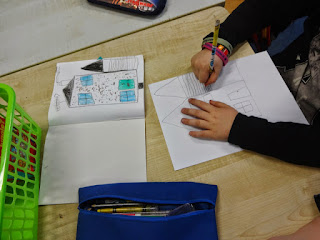Beginning with the theme "School" that will be integrated across all subjects-
In first class the children are concentrating on capital letters and their handwriting. They really want to be allowed to use pens in their copies, but this doesn't happen for a few years. So Calligraphy is a great way to allow them to experiment!
http://www.amazon.co.uk/gp/product/1402739125?psc=1&redirect=true&ref_=od_aui_detailpages00
http://www.amazon.co.uk/gp/product/B00CI6TDHU?psc=1&redirect=true&ref_=oh_aui_detailpage_o01_s00
At this age, just letting the children experiment is best. This is a new medium.
It will be a great lesson to reinforce letter formation as well as the use of capital letters. Calligraphy markers are much more durable than the pens.
At a very basic level- the children hold the pen flat to the paper. Begin as you would with a pre-writer. Zig Zags, lines, curves. They could trace over letters.
Week 2:
As winter is here (brrr!) we will begin to look at colour tones.
I normally print off templates to get the children to paint within, but I have found this has become an instructional procedure rather than experimenting with colour.
This year I think I will put down large sheets of paper and let them create colours. I will obviously control the colours that they have access to- otherwise they will just keep mixing the colours until they are brown!!
See here for my tips on teaching Primary Colours:
http://clairesprimaryschoolart.blogspot.ie/2015/08/primary-colours.html
Week 3:
A group painting using only the colours blue, black and white.
Week 4:
Experimenting with warm colours.
Creating a warm winter fire using chalk pastels to blend the colours.
I recommend using black sugar paper (it's rougher and the colour stays better)
Let the children experiment with the medium on a sample paper first. By smudging the colours with their finger they can blend them.
http://www.southernhodgepodge.com/wp-content/uploads/2012/12/chalk-pastel-3.jpg
Seal the chalk pastels with some hairspray. There are special sprays you can buy, but they are expensive.












































